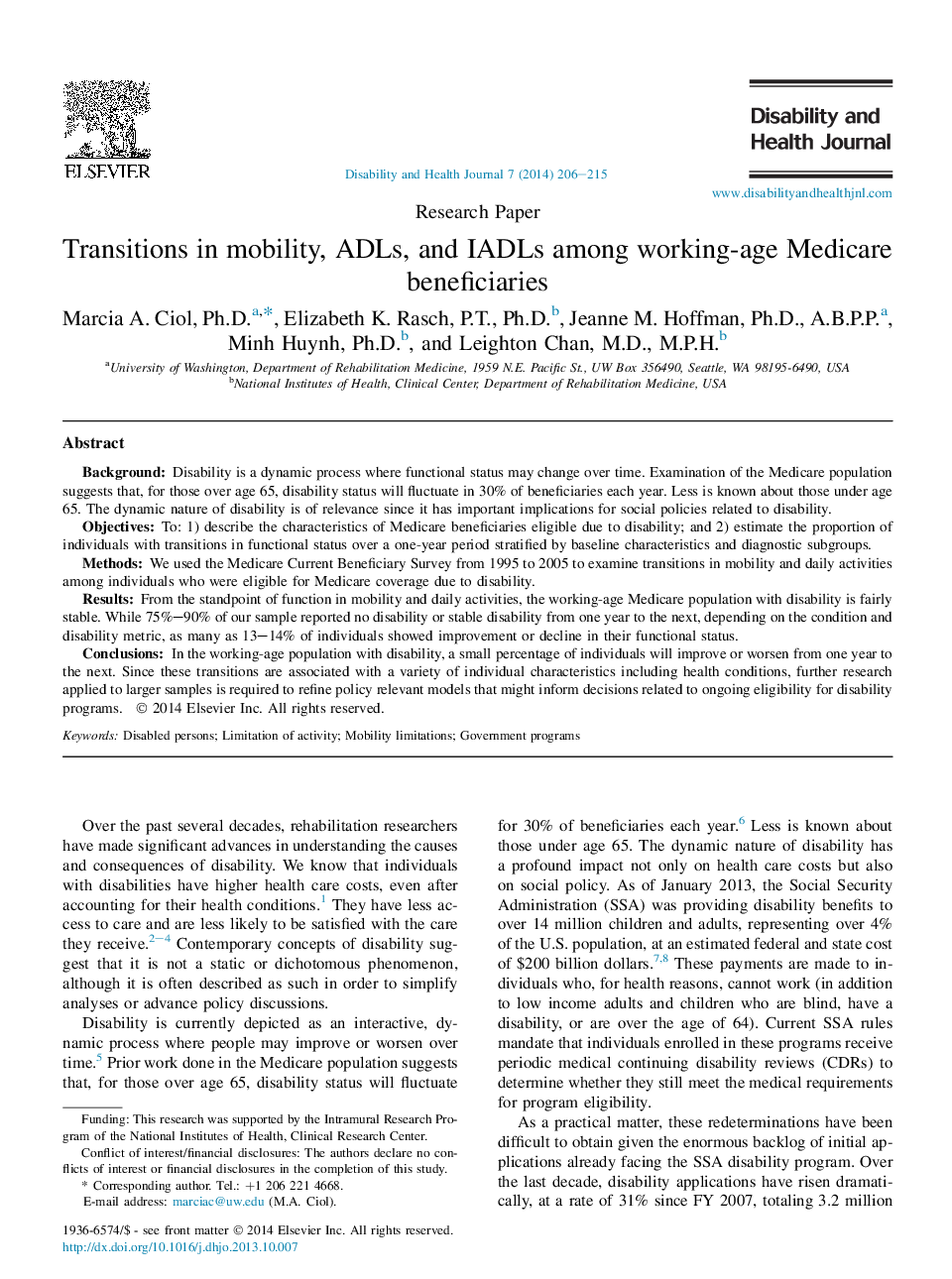| Article ID | Journal | Published Year | Pages | File Type |
|---|---|---|---|---|
| 4197233 | Disability and Health Journal | 2014 | 10 Pages |
BackgroundDisability is a dynamic process where functional status may change over time. Examination of the Medicare population suggests that, for those over age 65, disability status will fluctuate in 30% of beneficiaries each year. Less is known about those under age 65. The dynamic nature of disability is of relevance since it has important implications for social policies related to disability.ObjectivesTo: 1) describe the characteristics of Medicare beneficiaries eligible due to disability; and 2) estimate the proportion of individuals with transitions in functional status over a one-year period stratified by baseline characteristics and diagnostic subgroups.MethodsWe used the Medicare Current Beneficiary Survey from 1995 to 2005 to examine transitions in mobility and daily activities among individuals who were eligible for Medicare coverage due to disability.ResultsFrom the standpoint of function in mobility and daily activities, the working-age Medicare population with disability is fairly stable. While 75%–90% of our sample reported no disability or stable disability from one year to the next, depending on the condition and disability metric, as many as 13–14% of individuals showed improvement or decline in their functional status.ConclusionsIn the working-age population with disability, a small percentage of individuals will improve or worsen from one year to the next. Since these transitions are associated with a variety of individual characteristics including health conditions, further research applied to larger samples is required to refine policy relevant models that might inform decisions related to ongoing eligibility for disability programs.
